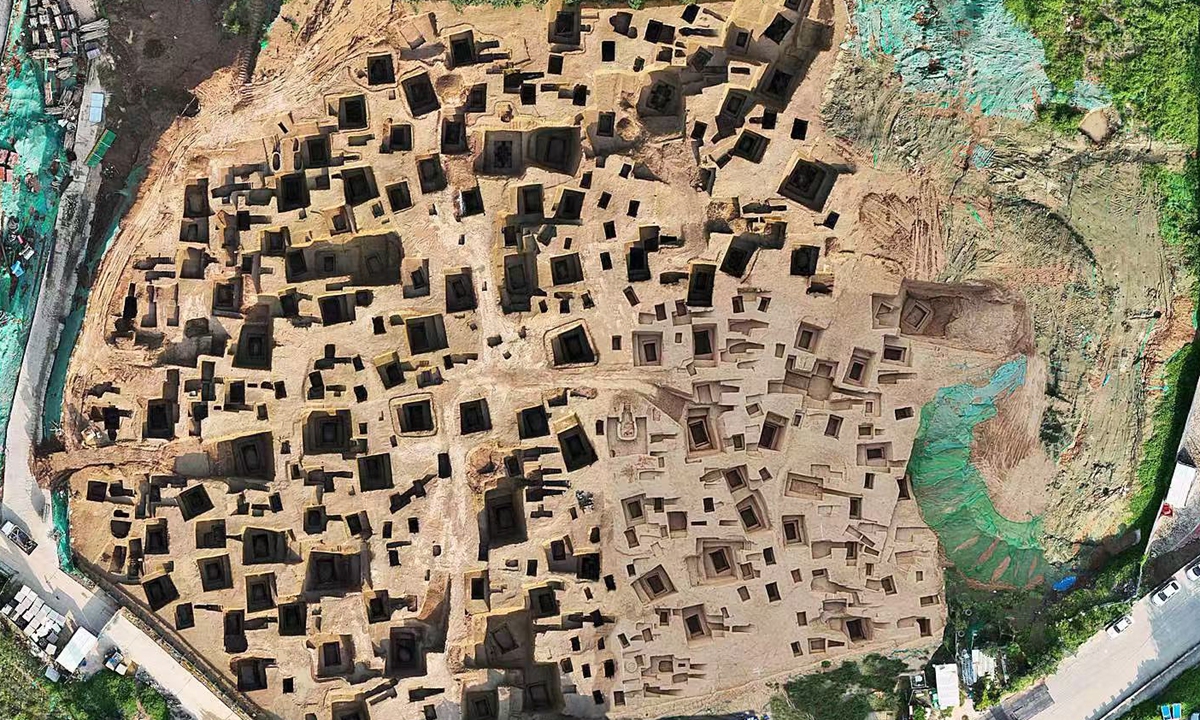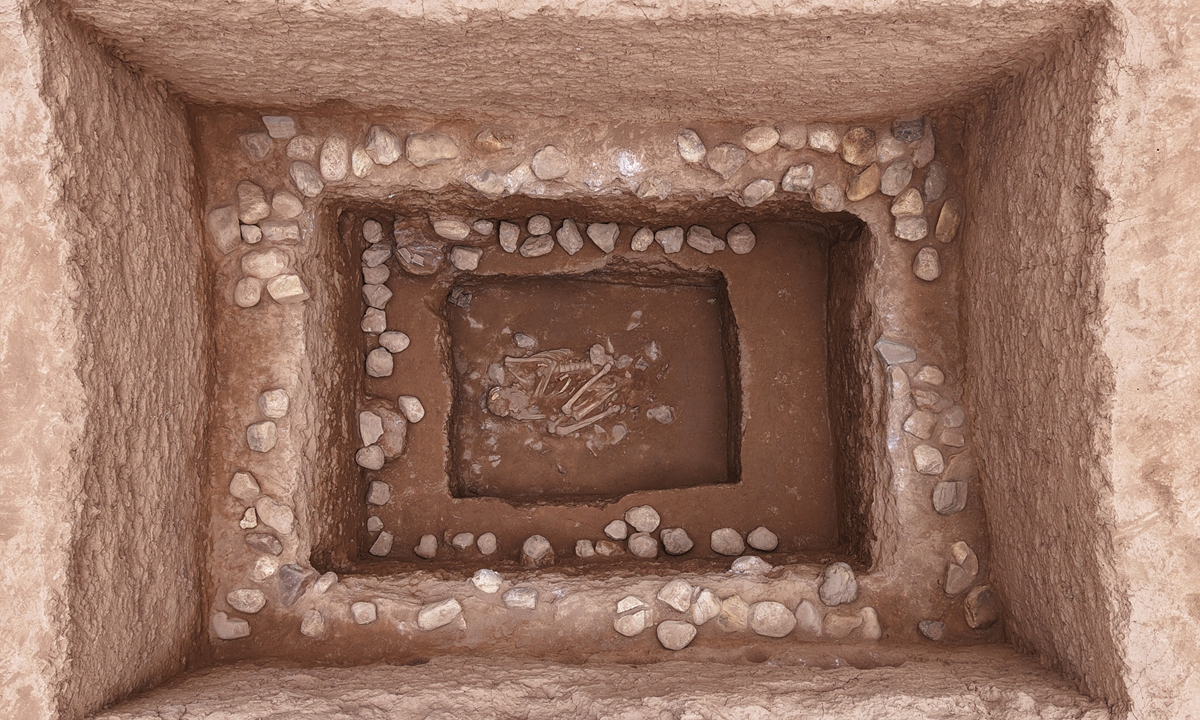Over 500 tombs discovered in Xi'an, including rare Warring States-era finds
2025-11-05 17:58:44 , Source : Global Times
Photo: Courtesy of the Shaanxi Academy of Archaeology
More than 500 ancient tombs dating from the Warring States Period (475BC-221BC) to the Qing Dynasty (1644-1911) have been discovered in Xi'an, Northwest China's Shaanxi Province, yielding more than 1,100 artifacts. This marks the first concentrated discovery of Warring States Period piled-stone tombs in Xi'an, the Global Times learned from the Shaanxi Academy of Archaeology .
The excavation, conducted by the Shaanxi Academy of Archaeology from May to October 2025 with the approval from the National Cultural Heritage Administration, uncovered 566 archaeological features at the Zhangjiapo site in Xi'an's Baqiao district.
Among them are 309 Warring States Period tombs, one chariot-and-horse pit, and 214 Tang Dynasty (618-907) tombs, along with smaller numbers of burials from the Han (206BC-AD220), Sui (581-618), Song (960-1279) and Qing dynasties. Archaeologists also unearthed a total of 1,169 artifacts, mostly pottery vessels such as vessels, jars, pots, basins and figurines.
The Warring States Period tombs are primarily east-west oriented vertical-pit burials, with more than 95 percent of them following this layout. Based on tomb structure, burial style and accompanying artifacts, researchers noted that the majority of the tomb owners were Qin people. Based on the form and combination of the burial goods, the majority of the tombs date to the mid-Warring States Period, with a few possibly dating back to the early Warring States Period.
A particularly significant discovery is a group of 25 piled-stone tombs. The orientation, burial style and accompanying artifacts of these tombs are identical to the others, but a large number of river cobbles were placed on the layers the burial pit including at the bottom. Although such piled-stone features have been found before in Warring States Period Qin tombs along the Chanhe River basin, their appearance in such a concentrated form is unprecedented.
It is noteworthy that the owners of the piled-stone tombs at the Zhangjiapo site adopted Qin-style burial customs, such as west-oriented flexed burials, and were interred with funerary objects characteristic of Qin culture. This phenomenon may suggest that these ethnic minority groups had lived in Qin territory for a long time and gradually developed a sense of cultural identity influenced by Qin culture.
"The piled stones in the tombs can be seen as a continuation of ancestral cultural traditions and a form of spiritual tribute. This group of Warring States Period piled-stone tombs provides valuable material for studying the composition and cultural identity of Qin populations and serves as strong evidence of the unity and inclusiveness of Chinese civilization," according to a document sent by the Shaanxi Academy of Archaeology to the Global Times.
Another remarkable discovery is a stone stele inscribed with a Tang Dynasty Buddhist scripture, unearthed from a pagoda-style tomb - the first excavated example of its kind in Xi'an.
Tang Dynasty tombs at the site are predominantly north-south oriented sloped-passage chamber tombs, accounting for more than 98 percent of the total. Among them, Tomb M144 stands out as an east-west oriented sloped-passage brick-chamber tomb, although it has suffered significant looting and damage.
Archaeologists also uncovered a rammed-earth foundation measuring 5.40 meters long, 5.80 meters wide, and 1.00 meter deep, with clearly visible compaction layers. Within this foundation, a stone stele inscribed with a Tang Dynasty Buddhist scripture was unearthed - the first of its kind in the Xi'an area. Based on the construction process, tomb structure, the size of the tower base, and the inscribed stele, researchers have determined that M144 is a Tang Dynasty pagoda-style tomb.
"M144 represents the first scientifically excavated Tang pagoda-style tomb in Xi'an, providing important material evidence for studying the integration of Buddhist beliefs with traditional Chinese burial concepts. It stands as a significant example of the sinicization of Buddhism in ancient China," according to the document.

Photo: Courtesy of the Shaanxi Academy of Archaeology

Government Organizations



Other Links

Copyright@www.shaanxi.gov.cn All Rights Reserved
Registration Number:陕ICP备10004160号
